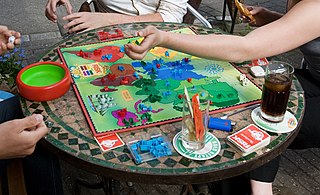
Risk is a strategy board game of diplomacy, conflict and conquest for two to six players. The standard version is played on a board depicting a political map of the world, divided into 42 territories, which are grouped into six continents. Turns rotate among players who control armies of playing pieces with which they attempt to capture territories from other players, with results determined by dice rolls. Players may form and dissolve alliances during the course of the game. The goal of the game is to occupy every territory on the board and, in doing so, eliminate the other players. The game can be lengthy, requiring several hours to multiple days to finish. European versions are structured so that each player has a limited "secret mission" objective that shortens the game.
Real-time strategy (RTS) is a subgenre of strategy video games that does not progress incrementally in turns, but allow all players to play simultaneously, in "real time". By contrast, in turn-based strategy (TBS) games, players take turns to play. The term "real-time strategy" was coined by Brett Sperry to market Dune II in the early 1990s.
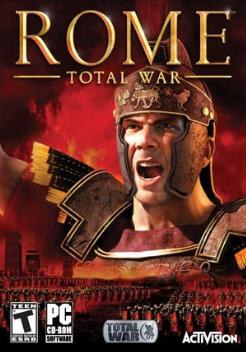
Rome: Total War is a strategy video game developed by The Creative Assembly and originally published by Activision; its publishing rights have since passed to Sega. The game was released for Microsoft Windows in 2004. The macOS version was released on February 5, 2010, by Feral Interactive, who also released the iPad version on November 10, 2016, the iPhone version on August 23, 2018, and the Android version on December 19, 2018. The game is the third title in The Creative Assembly's Total War series, following Shogun: Total War, and Medieval: Total War.
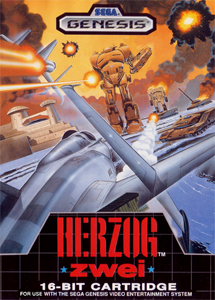
Herzog Zwei is a real-time strategy video game developed by Technosoft and published by Sega for the Mega Drive/Genesis. An early real-time strategy game, it predates the genre-popularizing Dune II. It was released first in Japan in 1989 and worldwide in 1990. It is the sequel to Herzog, which was available on the Japanese MSX and PC-8801 personal computers.

Warmaster is a ruleset for tabletop wargames written by Rick Priestley, published by Specialist Games, and set in the Warhammer Fantasy setting. It is different from Warhammer Fantasy Battles in both appearance and gameplay. It is intended for 10 –12 mm miniatures. Basic troops are based on stands, of which typically three make a unit. Generals, Heroes and Wizards are mounted individually or with their retinue.

Age of Mythology (AoM) is a real-time strategy video game developed by Ensemble Studios and published by Microsoft Game Studios. It was released on October 31, 2002 in North America and on November 14, 2002 in Europe.

North & South is a strategy action game released in 1989 for the Amiga, and Atari ST and ported to the Nintendo Entertainment System, Amstrad CPC, MSX, MS-DOS, Commodore 64 and ZX Spectrum. It was developed and published by Infogrames.
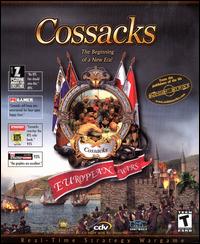
Cossacks: European Wars is a real-time strategy video game for Microsoft Windows made by the Ukrainian developer GSC Game World. It was released on 24 April 2001. The game has an isometric view and is set in the 17th and 18th centuries of Europe. It features sixteen playable nations each with its own architectural styles, technologies and no limit on unit numbers.

Robert E. Lee: Civil War General is a 1996 computer wargame developed by Impressions Games and published by Sierra On-Line. Set during the American Civil War, it tasks the player with leading the Confederate Army of Northern Virginia to victory against the Union Army of the Potomac. Impressions sought to make Civil War General accessible to wargame newcomers by streamlining its gameplay, and the Panzer General series was a reference point for its design and title.
Tower defense (TD) is a subgenre of strategy games where the goal is to defend a player's territories or possessions by obstructing the enemy attackers or by stopping enemies from reaching the exits, usually achieved by placing defensive structures on or along their path of attack. This typically means building a variety of different structures that serve to automatically block, impede, attack or destroy enemies. Tower defense is seen as a subgenre of real-time strategy video games, due to its real-time origins, even though many modern tower defense games include aspects of turn-based strategy. Strategic choice and positioning of defensive elements is an essential strategy of the genre.

Tom Clancy's Rainbow Six: Shadow Vanguard is a 2011 first-person shooter video game developed and published by Gameloft for iOS, Xperia Play and Android devices. The game is a remake of the original Tom Clancy's Rainbow Six video game.
Caller's Bane is a strategy digital collectible card game developed by Mojang, which aims to combine elements from trading card games and traditional board games. Scrolls was originally conceived and developed by Jakob Porsér, who along with Mojang founder Markus Persson, intended to create a type of game that was currently missing from the market. The game is developed using the Unity game engine, allowing it to run on multiple gaming platforms. Scrolls was announced on 2 March 2011, as Mojang Studios' second game. While Mojang had claimed that they stopped development of the game in June 2015, the company revealed that they had still been working on the project, and in June 2018, released the game under its new title Caller's Bane for free. The last update was released in 2019.

Kingdom Rush is a tower defense game developed by Ironhide Game Studio and published by Armor Games. It was released on July 28, 2011, as a browser game, followed by ports for iOS in December 2011, Android on May 13, 2013, and Windows and macOS on January 6, 2014. In the game's medieval fantasy setting, players take control of a general serving under King Denas of Linirea, who must defend the land from an onslaught of evil monsters. Each level is composed of a number of pre-set roads, which the player can place defensive towers around to fight off the approaching monsters. Slaying enemies gives the player gold, which they can use to buy new towers or upgrade existing ones to improve their capabilities.
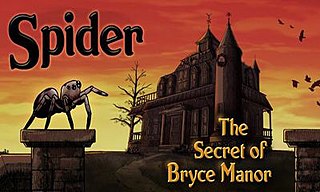
Spider: The Secret of Bryce Manor is a 2009 side-scrolling action-puzzle video game for iOS and Android, developed and published by Tiger Style. The player takes control of a spider who comes to reside in to the deserted Bryce Manor and must spin webs to trap various types of insects, whilst simultaneously ascertaining what happened to the former residents of the manor. The game received critical acclaim and won multiple awards. Originally released in August, a Director's Cut update replaced the original version on the App Store in December. The update added ten levels, twenty-four Game Center achievements, new music, more story elements and an insect. A year after the game's initial release, a HD version was released for the iPad. In 2013, the game was also released for Android. A sequel, Spider: Rite of the Shrouded Moon, was released in August 2015 for iOS, Android, Windows, Mac and Linux.

Great Big War Game is a modern military 3D turn-based strategy video game developed by British studio Rubicon Development. It has been released on iOS, Android and Microsoft Windows. The game is a sequel to Great Little War Game. The game features multiple environment types, and 50 levels in campaign mode and for the first time in the series cross platform online multiplayer.
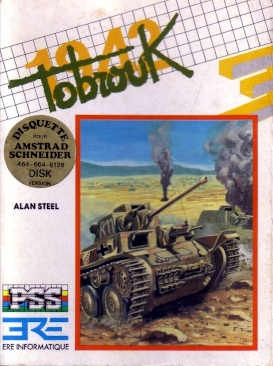
Tobruk: The Clash of Armour is a turn-based strategy video game developed and published by Personal Software Services. It was exclusively released in the United Kingdom for the Commodore 64, ZX Spectrum and Amstrad CPC in 1987. It is the eleventh instalment of the Wargamers series. The game is set during the 1941 Siege of Tobruk of the Western Desert Campaign in World War II and revolves around the Allied forces attempts to overthrow German field marshal Erwin Rommel from the city.
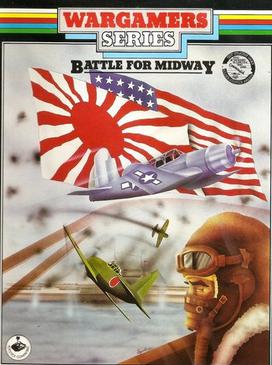
Battle for Midway is a turn-based strategy video game developed and published by Personal Software Services. It was first released in the United Kingdom and France for the MSX in 1984, and was re-released for the Amstrad CPC, Commodore 64 and ZX Spectrum in 1985. It is the second instalment of the Wargamers series. The game is set during the Battle of Midway in the Pacific Ocean theatre of World War II and revolves around the United States Navy attacking a large Imperial Japanese fleet stationed at Midway Atoll, in retaliation for the attack on Pearl Harbor.

The Battle of Polytopia is a 4X turn-based strategy game developed and published by Midjiwan AB. Players play as one of sixteen tribes to develop an empire and defeat opponents in a low poly square-shaped world. Players can play against bots or human opponents, local or online. The game was initially released in February 2016 and November 2016 in USA.
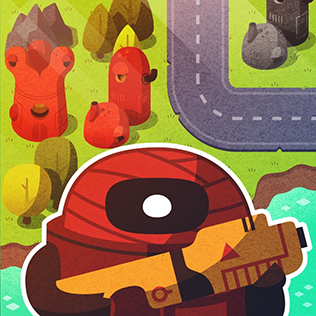
Warbits is a 2016 turn-based tactics video game developed and published by Risky Lab. It was released on April 13, 2016, for iOS. The game revolves around a virtual war between rival nations. While such wars have become commonplace to settle political disputes without actual violence, a glitch in the simulation soon becomes threatening to all factions. A remaster, Warbits+, was announced in 2021 for iOS, Windows and Android, with its release on mobile platforms slated for May 7, 2024.

Hunters is a series of two science fiction tactical role-playing video games developed and published by Rodeo Games for the iOS. The first game, Hunters: Episode One, was released in February 2011. The second game, Hunters 2, was released in March 2012.
















